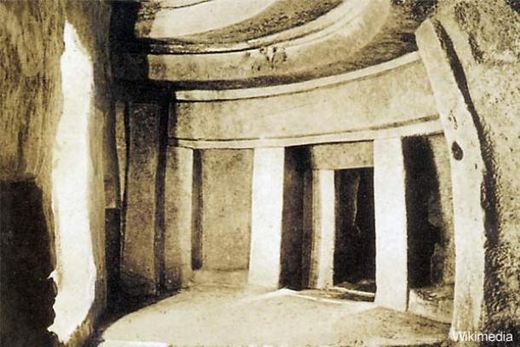
An international team of scientists is about to descend on Malta's Hypogeum of Hal Saflieni, a UNESCO World Heritage Site which is believed to be the oldest prehistoric underground temple in the world. The subterranean structure is shrouded in mystery, from the discovery of elongated skulls to stories of paranormal phenomena. But the characteristic that is attracting experts from around the globe is the unique acoustic properties found within the underground chambers of the Hypogeum.
Hal Saflieni Hypogeum is a cultural property of exceptional prehistoric value, dating back approximately 5,000 years and the only known example of a subterranean structure of the Bronze Age. The 'labyrinth', as it is often called, consists of a series of elliptical chambers and alveoli of varying importance across three levels, to which access is gained by different corridors. The principal rooms distinguish themselves by their domed vaulting and by the elaborate structure of false bays inspired by the doorways and windows of contemporary terrestrial constructions.
Although not known for certain, it is believed that the hypogeum was originally used as a sanctuary, possibly for an oracle. It is for this reason that a unique chamber carved out of solid limestone and demonstrating incredible acoustic properties has been called 'the Oracle Chamber'. According to William Arthur Griffiths, who wrote 'Malta and its Recently Discovered Prehistoric Temples', a word spoken in the Oracle room is "magnified a hundredfold and is audible throughout the entire structure. The effect upon the credulous can be imagined when the oracle spoke and the words came thundering forth through the dark and mysterious place with terrifying impressiveness."
It is said that standing in the Hypogeum is like being inside a giant bell. At certain pitches, one feels the sound vibrating in bone and tissue as much as hearing it in the ear. Sarasota arts and architecture critic Richard Storm explained the sensation: "Because you sense something coming from somewhere else you can't identify, you are transfixed."
The acoustic properties within the Hypogeum have already been studied extensively. It was found by Maltese composer Ruben Zahra and a research team from Italy that sound resonates at 110 Hz within the Oracle chamber, and this matches the same or similar frequency that has been found in many other ancient chambers around the world, including Newgrange in Ireland. According to Dr Robert Jahn from Princeton University, it may be the dimensions of the room or the quality of the stone that determines the exact pitch of this echo behaviour.
Read the rest of this article here.



Reader Comments
That is a term I learned from P'Taah.
Imagine two or more people singing face to face holding the same pitch at the same time and then having it acoustically magnified by this hypogeum. More importantly, begin at the Hypogeum's root tonal resonance and lift through the harmonic resonances that the room must exhibit. Very powerful indeed.
"this matches the same or similar frequency that has been found in many other ancient chambers around the world, including Newgrange "
and clearly this type of construction is intentional, is there anyone in science asking about how Bronze age people knew this and constructed such places if they were as primitive during that period as contemporary science insists?